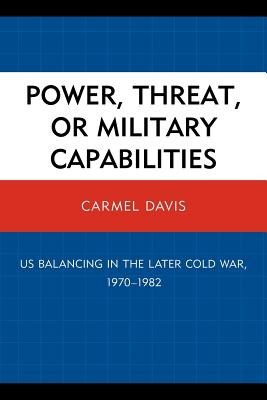
- We will send in 10–14 business days.
- Author: Carmel Davis
- Publisher: University Press of America
- ISBN-10: 0761855513
- ISBN-13: 9780761855514
- Format: 15.2 x 22.9 x 0.8 cm, softcover
- Language: English
- SAVE -10% with code: EXTRA
Reviews
Description
Power, Threat, or Military Capabilities assesses two mainstays of international relations, balance of power and balance of threat, using the case of US balancing against the Soviet Union in the later Cold War. It also proposes balance of military capabilities, which uses offense-defense theory to argue that countries balance against the ability of others to conquer or compel them. Power, Threat, or Military Capabilities finds that the US was more powerful than the Soviet Union so US behavior is not explained by balance of power. The US did not perceive the Soviet Union as likely to initiate war or to run risks that might lead to war so US behavior is not explained by balance of threat. This book determines that the US was concerned about its ability to defend Europe and the Persian Gulf so US behavior is explained by balance of military capabilities.
EXTRA 10 % discount with code: EXTRA
The promotion ends in 8d.19:26:26
The discount code is valid when purchasing from 10 €. Discounts do not stack.
- Author: Carmel Davis
- Publisher: University Press of America
- ISBN-10: 0761855513
- ISBN-13: 9780761855514
- Format: 15.2 x 22.9 x 0.8 cm, softcover
- Language: English English
Power, Threat, or Military Capabilities assesses two mainstays of international relations, balance of power and balance of threat, using the case of US balancing against the Soviet Union in the later Cold War. It also proposes balance of military capabilities, which uses offense-defense theory to argue that countries balance against the ability of others to conquer or compel them. Power, Threat, or Military Capabilities finds that the US was more powerful than the Soviet Union so US behavior is not explained by balance of power. The US did not perceive the Soviet Union as likely to initiate war or to run risks that might lead to war so US behavior is not explained by balance of threat. This book determines that the US was concerned about its ability to defend Europe and the Persian Gulf so US behavior is explained by balance of military capabilities.


Reviews